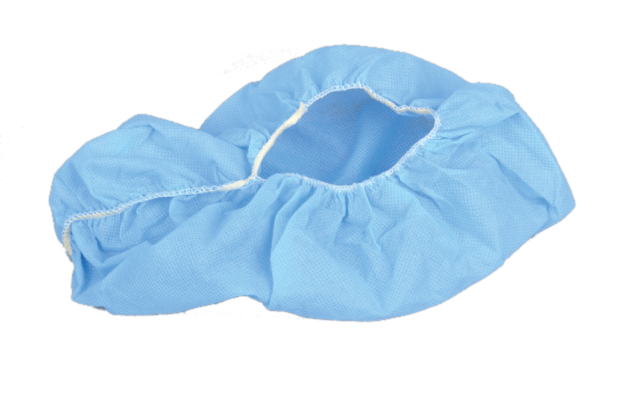Shoe Covers
Shoe Covers plain SPP These blue
polypropylene shoe covers safeguard against dirt, grime, and other unwanted particulates in non-hazardous environments. Anti-skid soles provide enhanced traction to help prevent accidental slips as you work. Breathable, lightweight fabric helps keep your feet cool, so you stay comfortable over long hours. Whether you’re working at a food processing plant, a pharmaceutical lab, or an environmental cleanup site, these shoe covers will protect your footwear and provide the traction you need to put in a hard day’s work.
- Non-skid soles are available for greater traction
- The elastic band gives a secure yet comfortable fit around the shoes
- Disposable non-woven shoe cover is made of 100% SBPP polypropylene
This Non-Woven Fabric shoe covers plain spp
helps filter particulates for contamination control. Non-skid soles are available for greater traction and improved safety.
BEE-SAFE non-skid polypropylene shoe covers are ideal for medical and light industrial applications. Shoe Covers plain SPP, They are also for use in manufacturing environments by Nexgenmedical
Shoe Covers Are Packaged 300 Pieces Per Case.
CTI’s SCR200 Series Spunbonded Polypropylene Shoe Covers are manufactured with the same outstanding quality as all of our other Scientific Division products. They are strong and durable but made from a lightweight material that offers breathability and comfort. Shoe Covers plain SPP All items are individually inspected for quality and workmanship.
Features
- Strong and Durable
- Contamination Control
- No Latex Proteins
- Lightweight Material Offers Comfort and Breathability while maintaining Snug Full Coverage
- Individually Inspected for Stitching, Sizing, Material, and Workmanship
- Lot Traceability
Did you know that advising healthcare professionals to wash their hands was once a controversial piece of advice? Yes, something that seems so obvious to us in 2021 actually cost a doctor his career for even suggesting it – in fact, it landed him in a psychiatric facility.
You’ve probably heard the phrase “wash your hands” more often in the past two years than all the previous years of your life combined. Today, it is basic knowledge that we have germs on our hands, and the easiest way to eliminate them is by washing our hands. It seems asinine to us that anyone would think otherwise.
Well, people in the 19th century didn’t know that. Let’s take it back to the 1840s in Austria – the Vienna General Hospital, to be exact. At the time, many new mothers were contracting a deadly ailment called puerperal fever shortly after giving birth.

Shoe Covers plain SPP
This hospital
Had two separate maternity wards: one staffed by male physicians and the other by female midwives. One of the two had a staggeringly-higher mortality rate than the other. Can you guess which one?
If you guessed the ward of midwives, you’d be wrong. Women under the care of physicians and medical students were dying at more than twice the rate of the midwives’ patients.
A Hungarian doctor
named Ignaz Semmelweis was determined to get to the bottom of this issue. He analyzed a variety of factors, from the position the women delivered to the priests attending to the dying patients. He slowly ruled out each possibility.
Shoe Covers plain SPP
Semmelweis didn’t give up, though. He began looking deeper into the differences between the hospital and the midwives’ ward and found something that stuck out to him: the doctors in the hospital were performing autopsies on cadavers in the mornings and then delivering babies in the afternoons. He had a theory that particles from the cadavers were being transferred to the women in the
hospital’s maternity ward.
